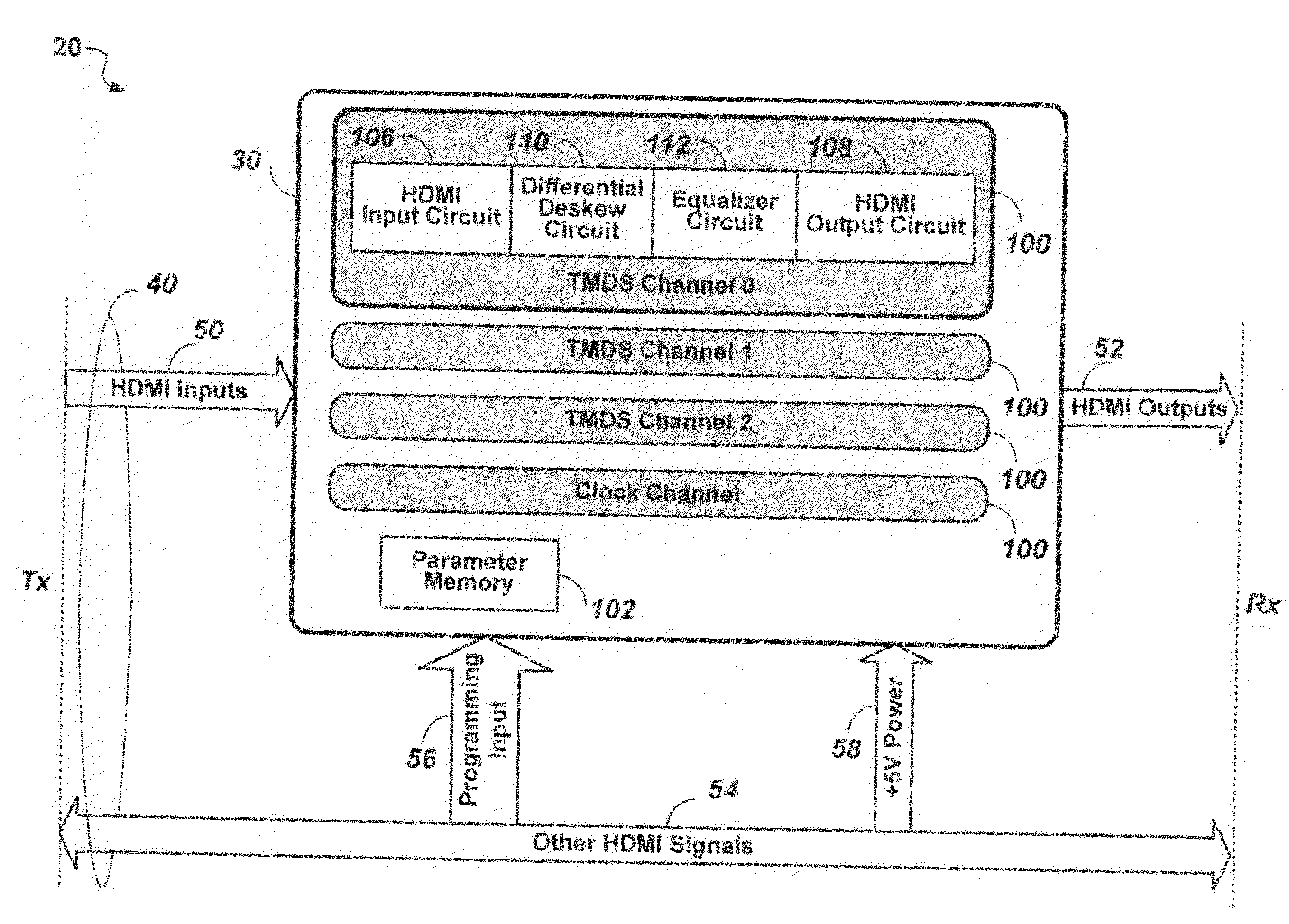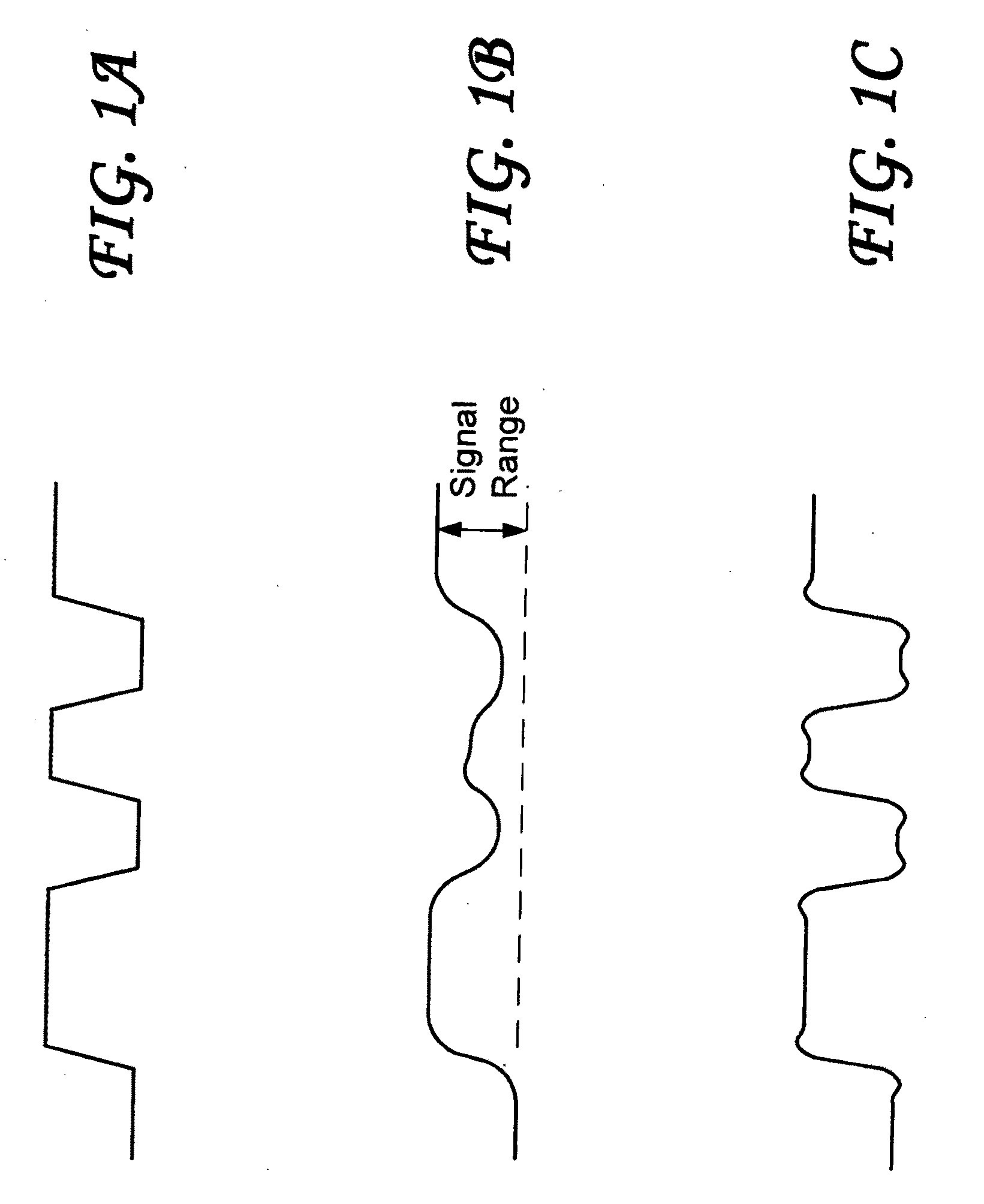Programmable high-speed cable with printed circuit board and boost device
a high-speed cable and printed circuit board technology, applied in the field of high-speed cables, can solve the problems of compromising the channel quality, increasing the risk of misinterpreting the received data at the receiver end of the cable, and affecting the high-speed signal carried by the cabl
- Summary
- Abstract
- Description
- Claims
- Application Information
AI Technical Summary
Benefits of technology
Problems solved by technology
Method used
Image
Examples
Embodiment Construction
[0071]FIG. 3 shows a prior art HDMI (High-Definition Multi-Media Interface) system, including a HDMI transmitter Tx (HDMI Source Device), a HDMI receiver Rx (HDMI Sink Device), and an HDMI cable connecting the Tx and the Rx.
[0072]FIG. 4 shows an HDMI system 10 including an improved HDMI cable 20 according to an embodiment of the present invention.
[0073]The HDMI system 10 includes the HDMI transmitter Tx (HDMI Source Device), the HDMI receiver Rx (HDMI Sink Device), and the improved HDMI cable 20 of the embodiment of the present invention, connecting the Tx and Rx.
[0074]The improved HDMI cable 20 comprises an embedded boost device 30, details of which are described in the following, and a basic (passive) HDMI cable 40. The boost device 30 is located near the end of the improved HDMI cable 20 closest to the HDMI receiver Rx. Without limiting the generality of the application, the improved HDMI cable 20 may be used to connect a DVD player (an example of an HDMI Source Device) to a Tele...
PUM
 Login to View More
Login to View More Abstract
Description
Claims
Application Information
 Login to View More
Login to View More - R&D
- Intellectual Property
- Life Sciences
- Materials
- Tech Scout
- Unparalleled Data Quality
- Higher Quality Content
- 60% Fewer Hallucinations
Browse by: Latest US Patents, China's latest patents, Technical Efficacy Thesaurus, Application Domain, Technology Topic, Popular Technical Reports.
© 2025 PatSnap. All rights reserved.Legal|Privacy policy|Modern Slavery Act Transparency Statement|Sitemap|About US| Contact US: help@patsnap.com



